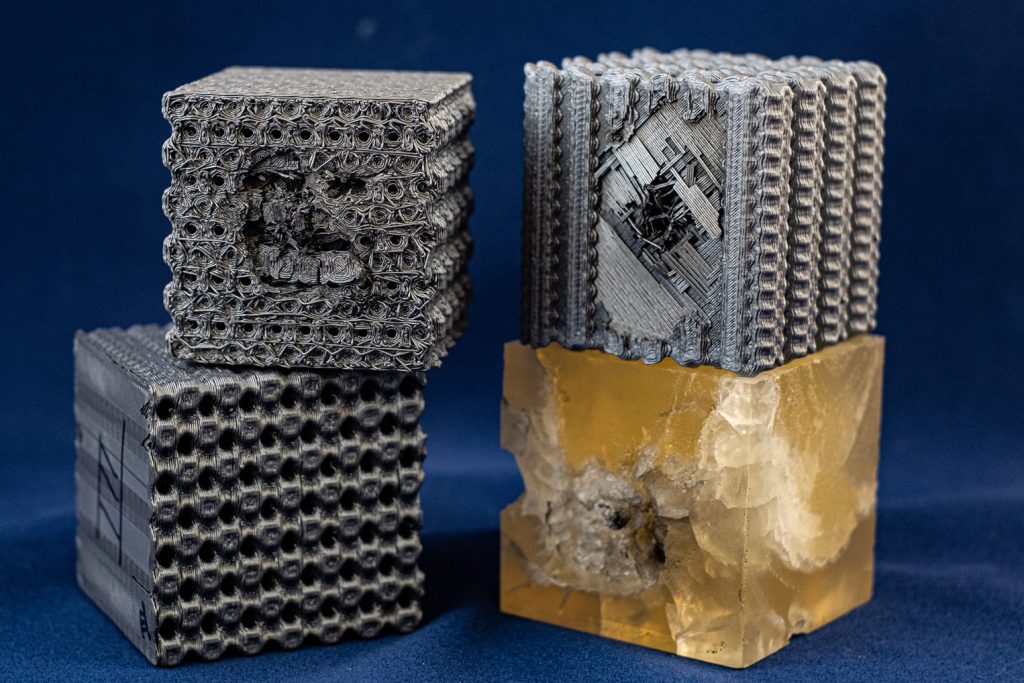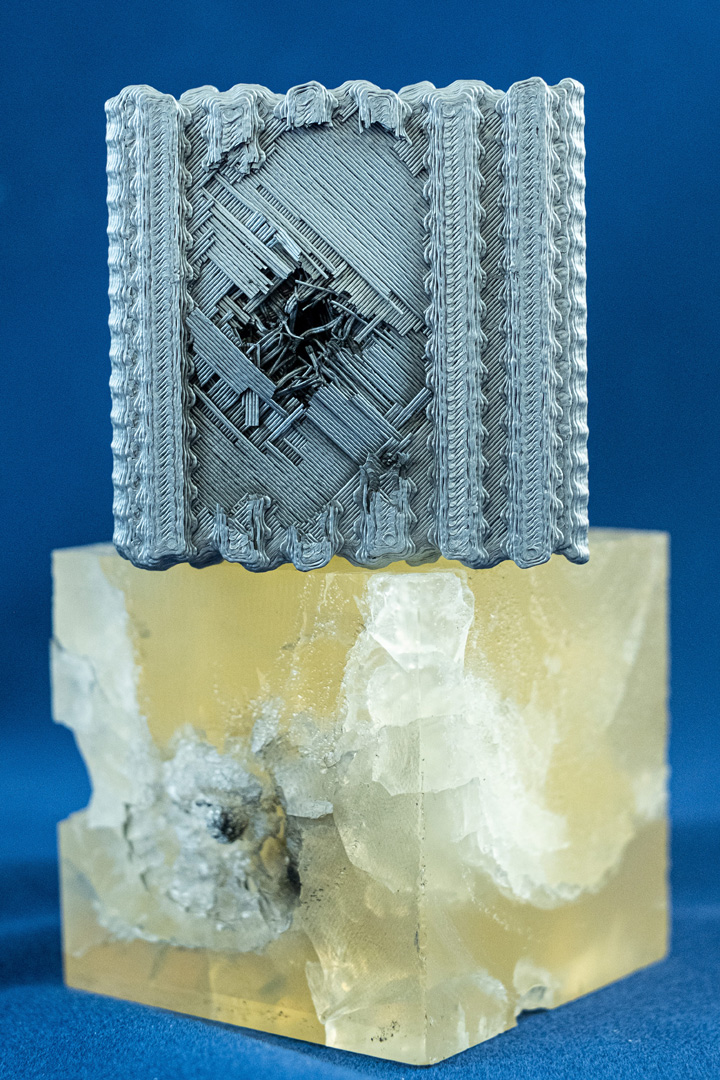HOUSTON – (Nov. 13, 2019) – A lightweight material full of holes is nearly as hard as diamond. The mere dents left by speeding bullets prove it.
Researchers at Rice University’s Brown School of Engineering and their colleagues are testing polymers based on tubulanes, theoretical structures of crosslinked carbon nanotubes predicted to have extraordinary strength.

Tubulane-like polymer structures created at Rice University were better able to handle the impact of a bullet than the polymer reference cube at bottom right. The bullet stopped in approximately the second layer of the tubulane structures, with no significant structural damage observed beyond that layer. Bullets fired at the same speed sent cracks through the entire reference cube. Photo by Jeff Fitlow.
The Rice lab of materials scientist Pulickel Ajayan found tubulanes can be mimicked as scaled-up, 3D-printed polymer blocks that prove to be better at deflecting projectiles than the same material without holes. The blocks are also highly compressible without breaking apart.
As detailed in Small, the discovery could lead to printed structures of any size with tunable mechanical properties.
Tubulanes were predicted in 1993 by chemist Ray Baughman of the University of Texas at Dallas and physicist Douglas Galvão of the State University of Campinas, Brazil, both co-principal investigators on the new paper. Tubulanes themselves have yet to be made, but their polymer cousins may be the next best thing.
Rice graduate student and lead author Seyed Mohammad Sajadi and his colleagues built computer simulations of various tubulane blocks, printed the designs as macroscale polymers and subjected them to crushing forces and speeding bullets. The best proved 10 times better at stopping a bullet than a solid block of the same material.


